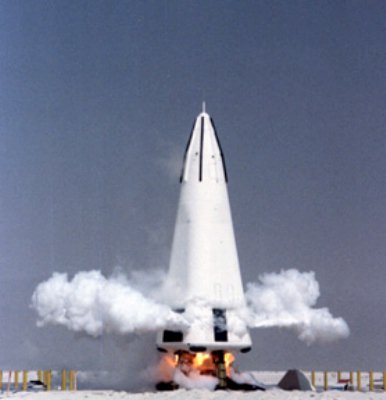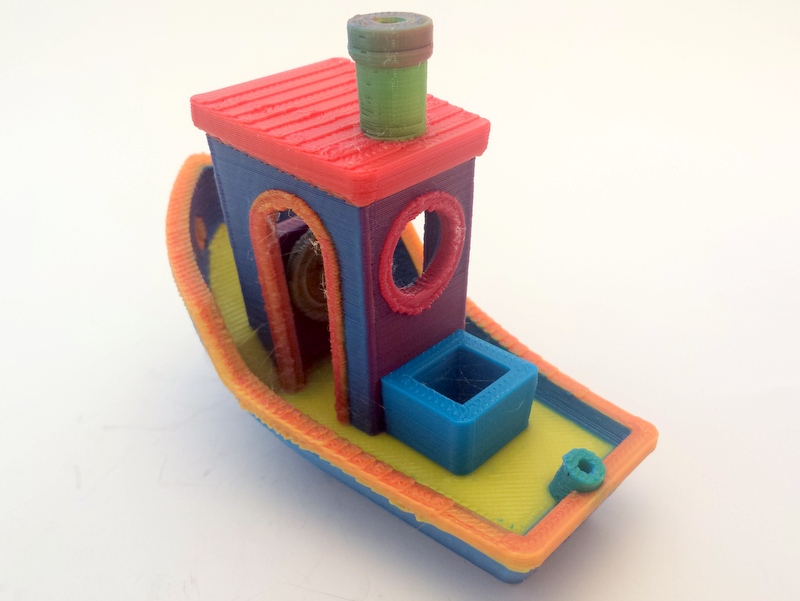|
Terran R
Terran R is a Heavy-lift launch vehicle, heavy-lift two-stage, partially reusable launch vehicle under development by Relativity Space. The vehicle is partially constructed with 3D printing technologies, like its predecessor, the small-lift Terran 1. The first flight is expected to be in 2026. Versions Original Proposed Version 2021 The Terran R was first publicly announced on 8 June 2021 after the company raised US$650 million in funding. Terran R was an evolution of the Terran 1, and at the time, it was to be 3D printed, fully reusable, including second stage and fairings. This planned version would be capable of putting into Low Earth orbit, low-Earth orbit (LEO) in recoverable configuration. 2023 Version On 12 April 2023, after the first flight of the Terran 1, Relativity Space CEO Tim Ellis (engineer), Tim Ellis announced that the rocket was no longer going to be further developed and focus would move to Terran R. The new version of the rocket will have a maximum payl ... [...More Info...] [...Related Items...] OR: [Wikipedia] [Google] [Baidu] |
Reusable Launch System
A reusable launch vehicle has parts that can be recovered and reflown, while carrying payloads from the surface to outer space. Rocket stages are the most common launch vehicle parts aimed for reuse. Smaller parts such as fairings, boosters or rocket engines can also be reused, though reusable spacecraft may be launched on top of an expendable launch vehicle. Reusable launch vehicles do not need to make these parts for each launch, therefore reducing its launch cost significantly. However, these benefits are diminished by the cost of recovery and refurbishment. Reusable launch vehicles may contain additional avionics and propellant, making them heavier than their expendable counterparts. Reused parts may need to enter the atmosphere and navigate through it, so they are often equipped with heat shields, grid fins, and other flight control surfaces. By modifying their shape, spaceplanes can leverage aviation mechanics to aid in its recovery, such as gliding or lift. In the a ... [...More Info...] [...Related Items...] OR: [Wikipedia] [Google] [Baidu] |
Ars Technica
''Ars Technica'' is a website covering news and opinions in technology, science, politics, and society, created by Ken Fisher and Jon Stokes in 1998. It publishes news, reviews, and guides on issues such as computer hardware and software, science, technology policy, and video games. ''Ars Technica'' was privately owned until May 2008, when it was sold to Condé Nast Digital, the online division of Condé Nast Publications. Condé Nast purchased the site, along with two others, for $25 million and added it to the company's ''Wired'' Digital group, which also includes '' Wired'' and, formerly, Reddit. The staff mostly works from home and has offices in Boston, Chicago, London, New York City, and San Francisco. The operations of ''Ars Technica'' are funded primarily by advertising, and it has offered a paid subscription service since 2001. History Ken Fisher, who serves as the website's current editor-in-chief, and Jon Stokes created ''Ars Technica'' in 1998. Its purpose was t ... [...More Info...] [...Related Items...] OR: [Wikipedia] [Google] [Baidu] |
Comparison Of Orbital Launch Systems
This comparison of orbital launch systems lists the attributes of all current and future individual rocket configurations designed to reach orbit. A first list contains rockets that are operational or have attempted an orbital flight attempt as of 2024; a second list includes all upcoming rockets. For the simple list of all conventional launcher families, see: Comparison of orbital launchers families. For the list of predominantly solid-fueled orbital launch systems, see: Comparison of solid-fueled orbital launch systems. Spacecraft propulsionThere are many different methods. Each method has drawbacks and advantages, and spacecraft propulsion is an active area of research. However, most spacecraft today are propelled by forcing a gas from the back/rear of the vehicle at very high speed through a supersonic de Laval nozzle. This sort of engine is called a rocket engine. is any method used to accelerate spacecraft and artificial satellites. Orbital launch systems are rockets an ... [...More Info...] [...Related Items...] OR: [Wikipedia] [Google] [Baidu] |
Ariane 6
Ariane 6 is a European expendable launch system developed for the European Space Agency (ESA) and manufactured by a consortium of European companies, led by the prime contractor ArianeGroup. As part of the Ariane rocket family, it is operated by Arianespace, replacing the Ariane 5. The project's primary contributors were France (55.3%), Germany (21%) and Italy (7.6%), with the remaining work distributed among ten other participating countries. This two-stage rocket utilizes liquid hydrogen and liquid oxygen ( hydrolox) engines. The first stage features an upgraded Vulcain engine from Ariane 5, while the second uses the Vinci engine, designed specifically for this rocket. The Ariane 62 variant uses two P120C solid rocket boosters, while Ariane 64 uses four. The P120C booster is shared with Europe's other launch vehicle, and is an improved version of the P80 used on the original Vega. Selected in December 2014 over an all-solid-fuel alternative, Ariane 6 was initially ... [...More Info...] [...Related Items...] OR: [Wikipedia] [Google] [Baidu] |
Impulse Space
Impulse Space is a startup founded in 2021 developing in-space transportation technology and services for satellites that fly to Low Earth Orbit but then need to reach other orbits. The company was founded by Tom Mueller, employee No.1 at SpaceX and principal engineer of the Merlin and Draco rocket engines that power the Falcon 9 and Dragon spacecraft. Orbital Transfer Vehicles Impulse Space designs and manufactures orbital transfer vehicles, sometimes called space tugs, to move satellites and payloads throughout space. Mira The size of a dishwasher, a Mira orbital transfer vehicle weighs approximately when loaded with propellant. It uses Saiph bipropellant thrusters which have a specific impulse (Isp) of 290 s. It can impart a delta-v of from 500 m/s with 300 kg payload to 900 m/s with 100 kg payload. In November 2023 the first Mira flight was launched as part the SpaceX Transporter-9 mission. Orbit Fab, in a mission funded by the Defense Inno ... [...More Info...] [...Related Items...] OR: [Wikipedia] [Google] [Baidu] |
CNBC
CNBC is an American List of business news channels, business news channel owned by the NBCUniversal News Group, a unit of Comcast's NBCUniversal. The network broadcasts live business news and analysis programming during the morning, Daytime television in the United States, daytime trading day, and early-evening hours, with the remaining hours (such as weekday prime time and weekends) are filled by business-related Television documentary, documentaries and reality television programming, as well as occasional NBC Sports presentations. CNBC operates an accompanying financial news website, CNBC.com, which includes news articles, video and podcast content, as well as subscription-based services. CNBC's headquarters and main studios are located in Englewood Cliffs, New Jersey, while it also maintains a studio at the Nasdaq MarketSite in Times Square, New York City. CNBC was originally founded in April 1989 as the Consumer News and Business Channel, a joint venture between NBC ... [...More Info...] [...Related Items...] OR: [Wikipedia] [Google] [Baidu] |
Falcon 9
Falcon 9 is a Reusable launch system#Partial reusable launch systems, partially reusable, two-stage-to-orbit, medium-lift launch vehicle designed and manufactured in the United States by SpaceX. The first Falcon 9 launch was on June 4, 2010, and the first commercial resupply mission to the International Space Station (ISS) launched on October 8, 2012. In 2020, it became the first commercial rocket to launch humans to orbit. The Falcon 9 has been noted for its reliability and high launch cadence, with successful launches, two in-flight failures, one partial failure and one pre-flight destruction. It is the most-launched American orbital rocket in history. The rocket has two-stage-to-orbit, two stages. The first (booster) stage carries the second stage and payload to a predetermined speed and altitude, after which the second stage accelerates the payload to its target orbit. The Booster (rocketry), booster is capable of Vertical takeoff, vertical landing, landing vertically to fa ... [...More Info...] [...Related Items...] OR: [Wikipedia] [Google] [Baidu] |
Newton (unit)
The newton (symbol: N) is the unit of force in the International System of Units (SI). Expressed in terms of SI base units, it is 1 kg⋅m/s2, the force that accelerates a mass of one kilogram at one metre per second squared. The unit is named after Isaac Newton in recognition of his work on classical mechanics, specifically his second law of motion. Definition A newton is defined as 1 kg⋅m/s2 (it is a named derived unit defined in terms of the SI base units). One newton is, therefore, the force needed to accelerate one kilogram of mass at the rate of one metre per second squared in the direction of the applied force. The units "metre per second squared" can be understood as measuring a rate of change in velocity per unit of time, i.e. an increase in velocity by one metre per second every second. In 1946, the General Conference on Weights and Measures (CGPM) Resolution 2 standardized the unit of force in the MKS system of units to be the amount need ... [...More Info...] [...Related Items...] OR: [Wikipedia] [Google] [Baidu] |
Tim Ellis (engineer)
Tim Ellis is an American aerospace engineer and the co-founder and former CEO of Relativity Space. Early life and education Ellis grew up in Plano, Texas. He is the oldest of three children. Ellis started college at the University of Southern California, where he planned to graduate and be a screenwriter, and study as part of USC’s Thematic Option program. However, during his freshman orientation he switched his major to aerospace engineering. Ellis and Relativity's other co-founder and CTO, Jordan Noone, both held leadership positions at USC's Rocket Propulsion Lab (RPL). Within RPL, Ellis and Noone helped launch the first student-designed and built rocket into space. While at the University of Southern California, Ellis had three consecutive internships with Blue Origin. Ellis holds a BS and a MS in Aerospace Engineering from USC Viterbi School of Engineering. Career Blue Origin After graduation, Ellis joined Blue Origin full time where he worked on 3D print ... [...More Info...] [...Related Items...] OR: [Wikipedia] [Google] [Baidu] |
3D Printed
3D printing, or additive manufacturing, is the construction of a three-dimensional object from a CAD model or a digital 3D model. It can be done in a variety of processes in which material is deposited, joined or solidified under computer control, with the material being added together (such as plastics, liquids or powder grains being fused), typically layer by layer. In the 1980s, 3D printing techniques were considered suitable only for the production of functional or aesthetic prototypes, and a more appropriate term for it at the time was rapid prototyping. , the precision, repeatability, and material range of 3D printing have increased to the point that some 3D printing processes are considered viable as an industrial-production technology; in this context, the term ''additive manufacturing'' can be used synonymously with ''3D printing''. One of the key advantages of 3D printing is the ability to produce very complex shapes or geometries that would be otherwise infeasibl ... [...More Info...] [...Related Items...] OR: [Wikipedia] [Google] [Baidu] |
Terran 1
Terran 1 was an expendable two-stage small-lift launch vehicle developed by Relativity Space. Development began in 2017 and the rocket was retired in 2023. Most structures and components of the vehicle are manufactured with 3D printing processes. Terran 1's first and only launch took place March 23, 2023 from Cape Canaveral, but did not achieve orbit due to a failure of the second stage. Following the failed launch, Relativity retired the rocket in favor of developing the much larger, reusable Terran R vehicle. Design Terran 1 consisted of two stages. The first stage is powered by nine Aeon 1 engines burning methane and oxygen propellants (methalox) in a gas-generator cycle, each producing of thrust. The second stage is powered by a single vacuum-optimized version of Aeon 1, known as AeonVac, producing of thrust in vacuum. Both stages are autogenously pressurized. The vehicle's (notional) payload fairing measures long and in diameter. Payload capacity was specified to be ... [...More Info...] [...Related Items...] OR: [Wikipedia] [Google] [Baidu] |




